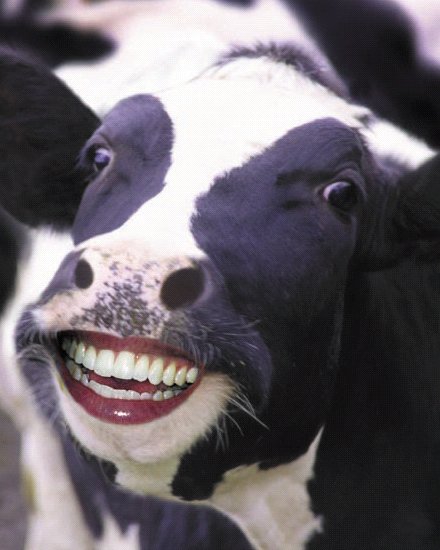1. MOOSE ARE HUGE.
Moose are the largest members of the deer family, weighing as much as 1200 pounds; they can grow to be 5 to 6.5 feet from hooves to shoulders. This does not include a raised head or antlers, so it's safe to say that the majority of moose tower over all non-basketball players.
With huge size comes a huge appetite. Moose are browsers and will casually devour 73 pounds a day in the summer and 34 pounds in the winter. They eat an assortment of shrubs, woody plants, and aquatic vegetation; in the winter, their diet is more restricted, so they eat the buds of plants.
3. ORGANISMS OF ALL SIZES POSE A THREAT TO MOOSE.
Moose are formidable opponents with sharp hooves that can kick with tremendous force, but even they have predators. A pack of wolves or a black bear is no match for a healthy adult moose, so bears and wolves typically pick off the young, sick, and old. And even though moose are powerful and quite large, a single bite can do one in: There's a good chance the bite will cause an infection that eventually kills the animal up to two weeks later.
Moose also have a much smaller menace to worry about: parasites. Brain worm (Parelaphostrongylus tenuis) is a parasite contracted from eating snails. The infectious larvae migrate to the moose's brain and cause neurological damage. "It’s interesting thinking of something as big as a human hair killing a 1200 pound moose, but they do," Carstensen says.
Another tiny nuisance is the winter tick. Tick infestations depend on the weather and habitat: Harsh winters mean less ticks the following year; when ticks fall off animals to complete their cycle and there's still snow on the ground, they die. So hard, long winters are great news for moose.
4. THEIR ANTLERS ARE USED FOR FIGHTING...
When fighting off predators, the antlers, or paddles, don't come into play as much as you would think; a moose's first line of defense is its sharp hooves, which are capable of mortally wounding a wolf or bear.
Paddles are only found on males, and used mainly for fighting and displaying. During mating season in autumn, bulls will cover a lot of ground looking for females to mate with. They establish breeding territory by fighting off other males in the area. The fights are not always fight-to-the-death scenarios, and often a competing moose will back away from a fight if the challenger has a more impressive rack of antlers. Great paddles are not the only way to find mates; some males with better navigational skills—or just sheer luck—may come across a female by chance and completely skip antler combat.
5. ...AND THEY SHED EVERY YEAR.
Moose lose their paddles every winter and grow new ones the following spring. "Antler growth is based on testosterone levels and day length," Carstensen says. "So they start to grow those antlers in the late spring and summer, and they’re covered in velvet. The velvet is vascularized so there is a blood-flow supplying these antlers as they’re growing." By early fall—a.k.a. mating season—bulls start to shed and shine their paddles by rubbing them against trees. Their fuzzy velvet-covered antlers go through a gory transformation, and by October they will have shiny new paddles for competition and display.
Antlers are also a great indicator of age. With each winter, young moose paddles grow in size: nubs become spikes and spikes become full racks. Bulls in their prime, between ages 5 and 8, have the largest racks. With old age, the antlers become more deformed and less impressive.
6. ANTLERS ARE HEAVY.
Just like the moose themselves, antlers can come in different sizes. The paddles are essentially a big bone, so they generally weigh quite a bit; bulls develop muscular necks to help hold up the enormous paddles. A full grown moose's antlers can weigh about 40 pounds. Anyway, this may be one of the most fascinating
animal facts until now.
7. THE BABIES NEED HELP FROM THEIR MOM.
Female moose, or cows, generally have 1 to 2 calves in May. On average, the calves weigh about 30 pounds at birth and grow very quickly. Still, baby moose don't have the ability to run or protect themselves very well, so the mother stays with her offspring for a year and a half, fighting off wolves and bears that try to pick off the young calves.
8. THEY'RE GREAT SWIMMERS.
Moose are naturally gifted swimmers. It's common to see one hop right into a lake and swim across at up to 6 mph. The animals have an innate ability to know how to swim, so even calves can swim.
9. THERE ARE FOUR SUBSPECIES IN NORTH AMERICA.
Moose can be categorized into four different species in North America: the eastern moose (A. alces americana), the Shiras moose (A. alces shirasi), the Alaskan moose (A. alces gigas), and the northwestern moose (A. alces andersoni), which Carstensen works with in Minnesota. Moose can be distinguished by different sizes and antler shapes. The largest moose is the Alaskan moose (pictured above) that can stand at 7 feet tall with an antler span of 6 feet.
10. THEY'RE DYING AT AN ALARMING PACE.
Something is happening to all the moose in Minnesota. The state once had a flourishing moose population in the north that was hunted and doing quite well: In the mid-1980s, there were 2000 of the animals in the northwest, but that number dropped to less than 200 in just two decades. This prompted the state to do some research to prevent further drops in population. Unfortunately, the northeast is now facing similiar a problem; the moose population has dropped 50 percent since the mid-2000s.
Learn all valuable information you wanted about
science facts via our articles.















